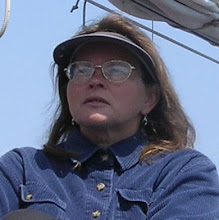The first lighthouse built in the Bay of Fundy was the Partridge Island light in Saint John in 1791. Because of the large tides in the Bay of Fundy and frequent dense fog, the resulting shipwrecks were detrimental to the confidence of navigating in the Bay. The need for lighthouses at strategic locations was essential to regain this confidence and allow ports to grow. As a result, the lower Bay of Fundy has one of the highest densities of lighthouses in the world.
 |
| Early image of Swallow Tail. At some point in its history the spelling has changed from Swallow Tail to Swallowtail. From the collection of Marc Shell. |
One of the first mentions of building a light house at Swallow Tail occurred in 1840 in a report by Captain John Robb to the legislative assembly. Six lighthouses were already in operation in the Bay, Partridge Island, East Quoddy, Gannet Rock, Machias Seal Island, Point LePreau and Saint Andrews. It was again mentioned in 1851 in the Legislative Papers and also in 1852 by the Commissioners of Light houses. After the wreck in 1857 of the “Lord Ashburton” on Grand Manan near Ashburton Head, another call for a lighthouse on the northern end of Grand Manan was made at Swallow’s Tail. The construction of a lighthouse and keepers house began in 1859. The tower could not be put into operation until 1860 after shipping the lantern from Birmingham, England. The light was light July 7, 1860 for the first time, using porpoise oil as the fuel. The light is situated 148 feet above the high water mark and cost £1,279 pounds to build.
Shortly after the construction of the light station, winter gales damaged the light tower and the foundation had to be rebuilt, including the Saxby Gale in October, 1869. The lightkeepers’ logs reveal many repairs from gales over the years. In 1958, the original light keepers house was replaced with a duplex. In the 1960s, the windows were removed from the light tower, the bell house was attached to the light tower and the iron lantern was replaced with a small lantern.
 |
| Stormy day at Swallow Tail. From an old postcard. |
The latitude for the light is: 44° 45' 50, longitude: 66° 44' 00. The tower is made of wood and is octagonal in shape, painted white, with a red iron lantern. Closer inspection of the light tower reveals that while octagonal at the base, the tower is only seven-sided at the top. This unusual construction was necessary to allow the door to open outwards in the lantern to gain access to the deck surrounding the iron lantern. The deck space is larger now that a smaller lantern was installed in the 1960s and there is no problem getting the door open.
 |
| Looking up at the top of the light tower where it changes from an octagon to a heptagon. The extended deck space at the top of the tower was necessary for the lantern door to be opened outward particularly for the original, larger lantern. |



